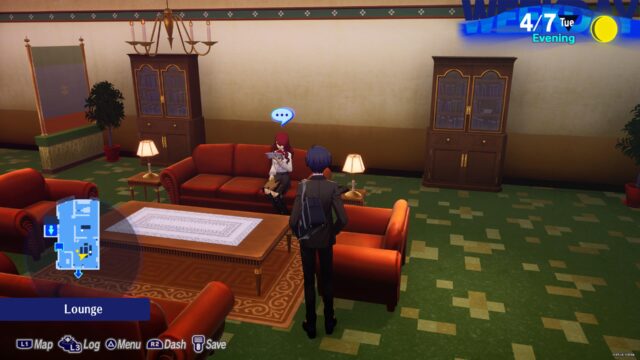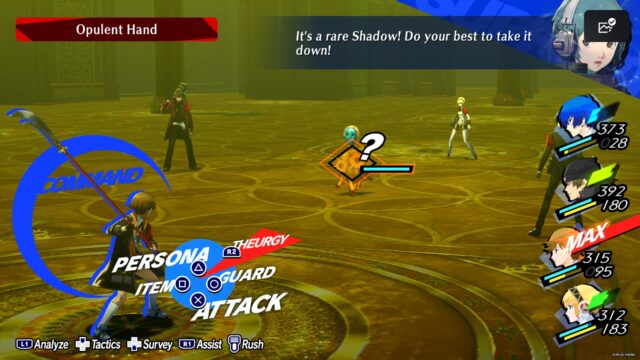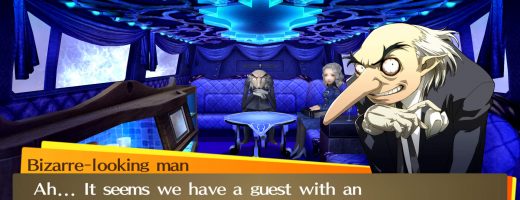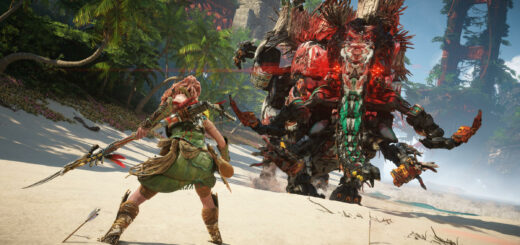Persona 3 Reload Review
Reloaded, Revitalized, and Highly Recommended
Originally released in 2006, Persona 3 introduced several features that years later became staples of the series. In an attempt to revitalize and unleash the full potential of the game, Atlus released this year a new version dubbed Persona 3 Reload, which showcases an outstanding presentation, better combat balance, and several quality-of-life additions that effectively empower its superb story. While many may miss the inclusion of the female protagonist available in Portable, Persona 3 Reload is undoubtedly the definitive edition of the game and a phenomenal chance for veterans to relive its fascinating story and reconnect with its characters or for newcomers to get into the series.
Players take on the role of a high school student who arrives in a new city where a strange event called the Dark Hour takes place every night. During this event, people disappear mysteriously, hostile creatures called Shadows roam the city, and an enormous tower emerges where the school is located. A school association called S.E.E.S. recruits the protagonist to help investigate the Dark Hour, making use of his unique powers and natural leadership. Along with his allies, the protagonist embarks on an intriguing and fun adventure that involves a double life, being a student during the day and a hero who controls Personas during the night. The story gradually escalates, with every story beat being satisfactorily developed and secrets being unveiled bit by bit. There’s a welcome focus on character development while adding treason, mystery, and dramatic twists that keep players engaged throughout the whole game. With several heartbreaking moments, characters evolve fantastically to create a gripping and memorable story.
The game’s characters elevate the story to another level, with a variety of likable and inspiring allies that include students, a dog, and an anthropomorphic robot. Characters are introduced piecemeal and given the perfect amount of attention, all having varied personalities to make them unique. Mitsuru and Aigis are clear standouts; Mitsuru captivates with her order, seriousness, and intelligence even when she struggles with the demons of her past while Aigis’ naivety charms everyone around her as she tries to understand what makes someone human. Secondary characters with whom the player can forge bonds are also masterfully developed to connect with players in different ways, including those dealing with girl problems, the divorce of their parents, or even looking for someone who shares their interest in food. It is a delight getting to know each of the characters and bringing out the best in them.
The gameplay is divided into two main mechanics: protecting the world and being a regular high school student. The members of S.E.E.S. explore a dangerous tower called Tartarus, boasting over 250 floors, during the Dark Hour. The parts of this enormous tower are unlocked as the story progresses, preventing players from getting overwhelmed by its size. Most of Tartarus’ floors are randomly generated, making them feel renewed even if players revisit some chunks of the tower. The variety of enemies and layouts of the floors also prevents exploring from becoming monotonous. Some floors of this massive tower include secret doors that lead to Monad, the depths of Tartarus where strong foes await. Clearing sections of Monad helps get special tarot cards and items to craft powerful equipment while offering players a challenge in combat.
During the day, the protagonist attends school, spends time with confidants, and has other activities at his disposal. The most important thing is to spend time wisely since only one activity can be done during each time period and the game has a calendar with a limited number of days for the story. The protagonist can improve his charm, courage, and academics by doing certain activities such as studying, working, or going out. These social stats need to reach a specific level to unlock certain interactions, so it is really important and gratifying to improve them. Players can forge bonds with some characters and deepen these bonds by spending time with them and listening to what they have to say. Strengthening these bonds also has positive effects while exploring Tartarus, including unlocking some of the most powerful Personas as well as granting fused Personas bonus experience. Trying to max out all these bonds requires paying attention to several aspects and some detailed time management. In addition, things are a bit skewed with more characters being available to interact with during the day than at night.
There are also optional quests given by one of the characters of the Velvet Room. These requests are worth doing since they grant useful rewards and most of them are short and easy to complete, with some that need to be completed in the city and others inside Tartarus. The map of the city makes it very friendly to track these quests and the location of available social links, saving players needless time walking around. Another feature that can be exploited is to check the network to get to know how other players spent that day. In this way, the game offers lost players some guidance that is highly appreciated.
The protagonist and his allies face enemies in turn-based battles. After exploiting enemies’ weaknesses or landing critical hits, the combatant gets another turn, which is the core of this battle system. Allies and most enemies have at least one weakness, so it is important to discover which elemental or physical attack is the weak spot to down enemies. If all enemies have been downed, the party can unleash a powerful all-out attack that deals massive damage. The protagonist can swap Personas in battle, which allows the party to have several, if not all, types of attacks at their disposal. Healing abilities, buffing and debuffing abilities, items, and status ailments also play interesting roles, especially during boss fights. The variety of enemies and bosses makes battling highly interesting throughout the whole game, especially because players can use several strategies to take them down. There are some special abilities called Theurgy, which unlock after filling a gauge for each character. The protagonist has several Theurgy skills and the other characters have two, with these abilities turning the tables since they are very powerful and ignore enemies’ resistance. These unique skills add a new layer to an already fantastic battle system that constantly makes players feel satisfied when they can spot enemies’ weaknesses and use those to defeat them more easily.
After winning some battles, players get to pick a card from a shuffle. These cards can be Personas, skills cards, more experience, gold, or Arcana cards that grant special effects, with most effects lasting until players leave Tartarus that night. Personas that are not available during shuffle rounds can be obtained by fusing them in the Velvet Room. These Personas inherit abilities from the ones they were fused from and can level up immediately depending on the level of the social link. Players can also pay yen to summon Personas that they have acquired before. The vast array of Personas with varied abilities and attractive looks is great and invites players to complete the Persona compendium.
The art direction is by far the game’s biggest evolution. The presentation is improved significantly from both its original release and prior remake, with Persona 3 Reload looking as if it were the latest mainline entry of the series. From Personas and characters to Theurgy abilities and other battle animations, everything is spectacular and full of style. Tartarus has never been so imposing, and the cinematics are breathtaking. The catchy OST composed by Shoji Meguro for the original game has been rearranged, and there are also new vibrant tracks composed by Atsushi Kitajoh. Battle music and the background music during cinematics make the whole adventure very exciting. Voice acting hits all the right notes, and many lines of voice acting were added to moments such as the interactions with social links, making them have a bigger impact.
Persona 3 Reload is the best edition of the game and DLC promises to bring some additional content that was featured in other iterations of the game. The story has been preserved while the gameplay has been renewed and enhanced. Persona 3 Reload is closer to being the next mainline entry than simply a remake, making it a must-play game for all RPG fans.
Disclosure: This review is based on a free copy of the game provided by the publisher.


Marvelous presentation
A fascinating story with great characters
Theurgy is a great addition to an excellent battle system
Lack of balance between evening and afternoon social links
Many will miss the inclusion of the female protagonist









Recent Comments